This article was medically reviewed by Janice Litza, MD. Dr. Litza is a board certified Family Medicine Physician in Wisconsin. She is a practicing Physician and taught as a Clinical Professor for 13 years, after receiving her MD from the University of Wisconsin-Madison School of Medicine and Public Health in 1998.
There are 20 references cited in this article, which can be found at the bottom of the page.
This article has been viewed 48,067 times.
A fever is a short-term increase in your body temperature over your normal baseline of around 98.6°F (37°C). You usually get a fever when you're sick, because fevers are your body's self-defense mechanism against germs – your fever is trying to kill whatever is causing your illness! Thus, fevers themselves don't need to be treated as an illness, and they aren't dangerous for adults unless they get too high. Cope with having a fever by keeping yourself comfortable and learning to recognize other dangerous signs of infection.
Steps
Tending to Mild Fevers
-
1Take your temperature with a thermometer. Any body temperature over 98.6°F (37°C) is considered a fever, though fevers lower than 103°F (39.4°C) in adults generally aren't dangerous. Monitor your temperature on a regular basis while you're sick, at least twice a day, to track whether it's improving or worsening.
- There are many types of thermometers on the market ranging from the usual under-the-tongue (oral), to rectal (in the bottom), tympanic (in the ear), and temporal artery (on the forehead) thermometers. The latter are usually used for kids (rectal for infants), whereas most adults get a close enough reading with an oral thermometer.[1] You can also take a child's temperature under their arm.[2]
- If you use a thermometer rectally, label it so that it is not accidentally used orally at a later time.
- Normal body temperature actually varies between 97°F (36.1°C) and 99°F (37.2°C). It's also affected by things like exercise and hormonal fluctuations like menstruation and menopause.[3]
-
2Leave your fever alone if you can. Your body is causing your fever on purpose to fight off germs. It might not be comfortable for you, but your fever is actually helping you get better. When possible, don't treat mild fevers – lowering your fever can actually keep you sick longer, or cover up other symptoms.[4] If you can cope with the discomfort, bundle up in bed with soup and TV or a good book and leave your fever untreated.
- Generally, do not treat fevers under 102°F (38.9°C) unless your doctor tells you to.[5]
Advertisement -
3Stay at home. Do not go to work or school if you have a fever. Not only will you feel terrible and probably be pretty unproductive, you'll be putting more stress on your body rather than allowing it to rest and recover. Stay home to rest and protect your coworkers or classmates from catching what you have.
- Have good sickness hygiene if you leave the house or live with other people. Wash your hands frequently, especially after using the bathroom, coughing, or sneezing. Cover your mouth when you sneeze or cough. Do not prepare food for others when you're sick, and don't share cups or utensils.[6]
-
4Get plenty of rest. When you're feverish, stay in bed and rest. You'll probably feel pretty weak and tired.[7] Rest and sleep help you and your immune system recover from illness. When less energy is being spent on waking activities, your body has more energy to fight infection.
-
5Stay hydrated. It's really easy to get dehydrated when you have a fever; in fact, dehydration is usually the most dangerous thing about having a fever.[8] Sip on water throughout the day to stay hydrated, even if you don't feel like it. Have plenty of other clear fluids like soup, tea, and juice. If you're nauseated, suck on ice chips – you have to get fluids somehow.
- Don't drink alcohol.[9] Alcohol dehydrates you and makes it harder for your body to fight infection.
- If you become severely dehydrated you might need an IV at the hospital.
- Signs of dehydration include feeling really thirsty, having a dry mouth or dry skin, not urinating as much as usual or having dark urine, and feeling weak, dizzy, fatigued, or lightheaded.[10]
-
6Make yourself eat. You might lose your appetite when you have a fever.[11] However, you should force yourself to eat even small amounts throughout the day – your body needs fuel to fight infection and recover. Eat small amounts of healthy foods that you can tolerate – fruits, vegetables, grains, cereal, soup, and smoothies are good options.
- Cater to your other symptoms to stay comfortable. If you're having nausea or diarrhea, stick to the BRAT diet – bananas, rice, applesauce and toast. If your throat is sore, drink warm liquids like tea and soup.
-
7Keep cool. Get more comfortable by keeping yourself cool. Dress in light clothing, sleep with light bedding, or open a window for some fresh air.[12] Dampen a washcloth with cool water and put it on your neck or forehead for some soothing relief.
-
8Take over-the-counter medicine to be more comfortable. Fevers may occur with headaches, body aches, chills, sweats, and shivering.[13] If your fever is over 102°F (38.9°C) and you feel extremely uncomfortable or you have to feel better to be productive, take an OTC pain reliever and fever reducer.[14] Acetaminophen products like Tylenol and ibuprofen products like Advil and Motrin can improve aches and pains and temporarily lower your fever.
- Understand that these medications do not cure your illness, they just temporarily improve your symptoms.
- Don't take these products if you have liver or kidney damage or have had stomach ulcers. Only take them as prescribed by your doctor or indicated on the label.
- Adults can take aspirin for discomfort, as well. Never give aspirin to children – it's been known to trigger a serious illness in kids called Reye's Syndrome.[15]
Dealing With Dangerously High Fevers
-
1See your doctor for fevers over 103°F (39.4°C) or cognitive symptoms. For adults, fevers aren't dangerous until they get to be 103°F (39.4°C) or higher.[16] Fevers between 103°F (39.4°C) and 106°F (41.1°C) can cause serious symptoms like confusion, irritability, hallucinations, convulsions or seizures, and severe dehydration.[17] If you or someone you know is experiencing these symptoms, seek medical care right away.
- If you have a fever that stays over 105°F (40.5°C) even after taking medicine, call for emergency help. This is a dangerously high temperature that requires treatment in a hospital if it cannot quickly be controlled at home.[18]
-
2Get medical assistance if you have other severe symptoms. Call your doctor or go to the hospital if your fever is high or lasts longer than 3 days.[19] Your doctor will try to diagnose your fever – if you seem to have a bacterial infection, they will prescribe an antibiotic.[20] Monitor yourself for any unexplained symptoms, and seek emergency care if you experience any of the following:[21]
- Severe headache, stiff neck, or pain when you bend forward.
- Swelling in your throat.
- A new skin rash, especially if it's getting worse quickly.
- Sensitivity to light.
- Confusion, irritability, hallucinations, or severe weakness or listlessness.
- Vomiting that won't stop.
- Chest pain or trouble breathing.
- Abdominal pain or pain when you pee.
- Muscle weakness, stumbling, slurred speech, or changes in your vision, touch, or hearing (this could indicate problems with your nerves, brain, or spinal cord).
- Seizure.
-
3Monitor your feverish child and seek care if necessary. Mild fevers in children might indicate a more serious problem.[22] If your child is feverish but is playing normally, is eating and drinking well, and has a normal skin color there's little cause for concern.[23] However, call or visit your child's doctor if your child:[24]
- Is listless, irritable, or won't make eye contact with you.
- Vomits repeatedly or has other symptoms causing discomfort, like severe headache or stomachache.
- Has a fever after being left in a hot enclosed space like a car – seek emergency care right away.
- Has a fever lasting over 3 days (for kids 2 years and older)
- Has a seizure. It's not abnormal for some children between the ages of 6 months and 5 years to have seizures if they have a higher temperature (these are called febrile seizures). These look scary for parents, but are usually harmless and do not indicate the child has a seizure disorder.[25]
Take the child to the doctor to determine the cause.
- Call emergency services if the seizure lasts over 5 minutes.[26]
-
4Get medical help for feverish or symptomatic infants. Infants who get a fever should be treated very cautiously. Take your baby to the doctor right away if they:[27]
- Are 3 months or younger with a temperature of 100.4°F (38°C) or higher.
- Are ages 3-6 months with a fever over 102°F (38.9°C), or lower but are irritable or lethargic.
- Are 6 months to 2 years old and have a fever over 102°F (38.9°C) for longer than a day, or have other symptoms like a cold, cough, or diarrhea.
- A newborn with any fever or a low body temperature – infants don't regulate their body temperature well and might get colder rather than warmer when they're sick (under 97°F/36.1°C).
Warnings
- It's easy to become dehydrated when you have a fever, so remember to drink fluids consistently throughout the day.⧼thumbs_response⧽
References
- ↑ https://kidshealth.org/en/parents/take-temperature.html
- ↑ https://my.clevelandclinic.org/health/symptoms/10880-fever/care-and-treatment
- ↑ https://medlineplus.gov/ency/article/001982.htm
- ↑ https://medlineplus.gov/ency/article/003090.htm
- ↑ https://medlineplus.gov/ency/article/003090.htm
- ↑ http://www.mayoclinic.org/diseases-conditions/fever/basics/prevention/con-20019229
- ↑ https://medlineplus.gov/ency/article/003090.htm
- ↑ https://www.eehealth.org/blog/2020/10/how-to-avoid-dehydration-when-sick/
- ↑ https://my.clevelandclinic.org/health/symptoms/10880-fever/care-and-treatment
- ↑ https://www.nhs.uk/conditions/dehydration/
- ↑ https://www.scientificamerican.com/article/fact-or-fiction-feed-a-cold/
- ↑ http://www.mayoclinic.org/diseases-conditions/fever/basics/lifestyle-home-remedies/con-20019229
- ↑ https://medlineplus.gov/ency/article/003090.htm
- ↑ https://medlineplus.gov/ency/article/003090.htm
- ↑ https://www.nhs.uk/conditions/reyes-syndrome/
- ↑ http://www.mayoclinic.org/diseases-conditions/fever/basics/definition/con-20019229
- ↑ http://www.mayoclinic.org/diseases-conditions/fever/basics/symptoms/con-20019229
- ↑ https://www.hackensackmeridianhealth.org/HealthU/2020/09/17/when-to-seek-care-for-a-fever/
- ↑ https://medlineplus.gov/ency/article/003090.htm
- ↑ https://www.aafp.org/afp/2003/1201/p2223.html
- ↑ http://www.mayoclinic.org/diseases-conditions/fever/basics/symptoms/con-20019229
- ↑ https://www.uofmhealth.org/health-library/fevr3
- ↑ http://kidshealth.org/en/parents/fever.html#
- ↑ https://kidshealth.org/en/parents/fever.html
- ↑ https://share.upmc.com/2016/10/fever-treatment-guidelines/
- ↑ https://share.upmc.com/2016/10/fever-treatment-guidelines/
- ↑ https://www.seattlechildrens.org/conditions/a-z/fever-0-12-months/
- ↑ https://www.hopkinsmedicine.org/health/wellness-and-prevention/antibiotics
About This Article
If you think you have a fever, use a thermometer to take your temperature. If you’re an adult with a fever under 103 degrees, you can safely treat it at home. For higher fevers, seek medical care immediately. Unless you’re feeling really uncomfortable, don’t take medicines to reduce a fever under 102 degrees. Instead, make yourself comfortable by resting and drinking plenty of fluids. You can also help yourself feel better and recover faster by eating small amounts of healthy foods throughout the day, such as fruits and vegetables, soup, and cereal. If you feel hot, cool yourself down by dressing lightly or putting a cool compress on your forehead. Finally, if your fever is higher than 102 degrees or you feel really terrible, consider taking an over-the-counter fever reducer, such as Tylenol. For more advice from our Medical co-author, including how to deal with dangerously high fevers, keep reading!
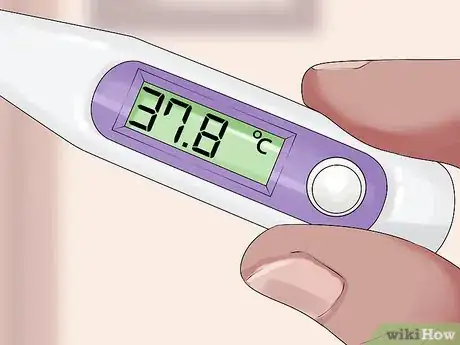



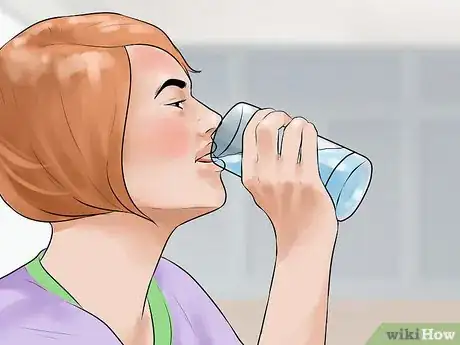


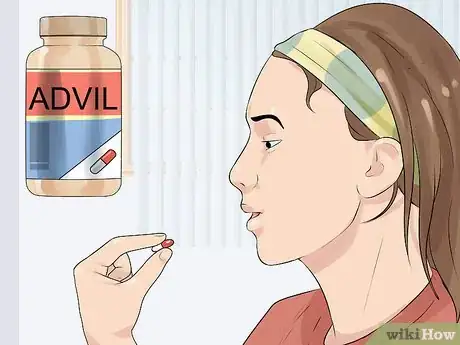

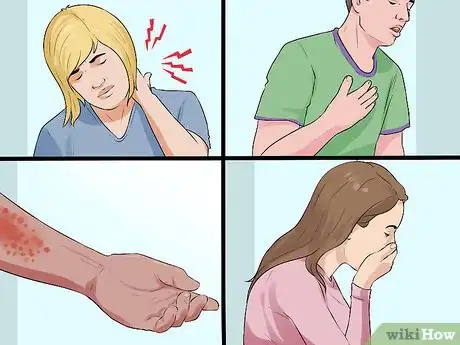


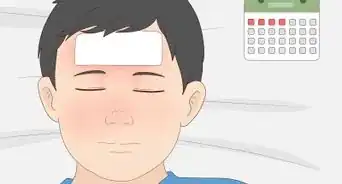
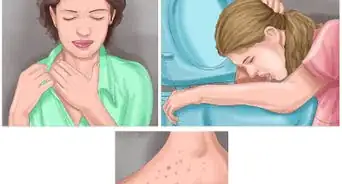


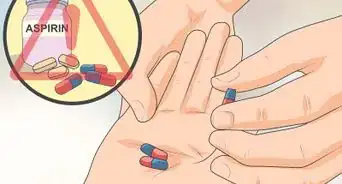
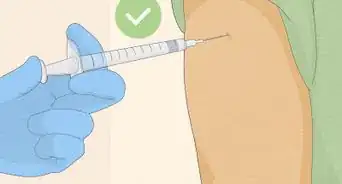
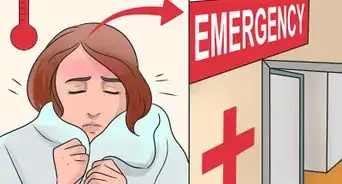
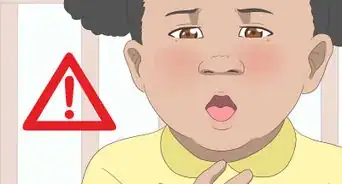
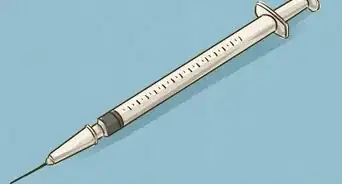



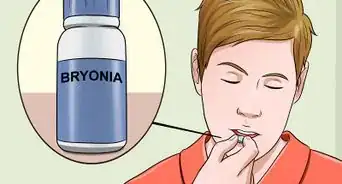








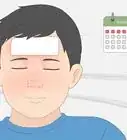






































Medical Disclaimer
The content of this article is not intended to be a substitute for professional medical advice, examination, diagnosis, or treatment. You should always contact your doctor or other qualified healthcare professional before starting, changing, or stopping any kind of health treatment.
Read More...